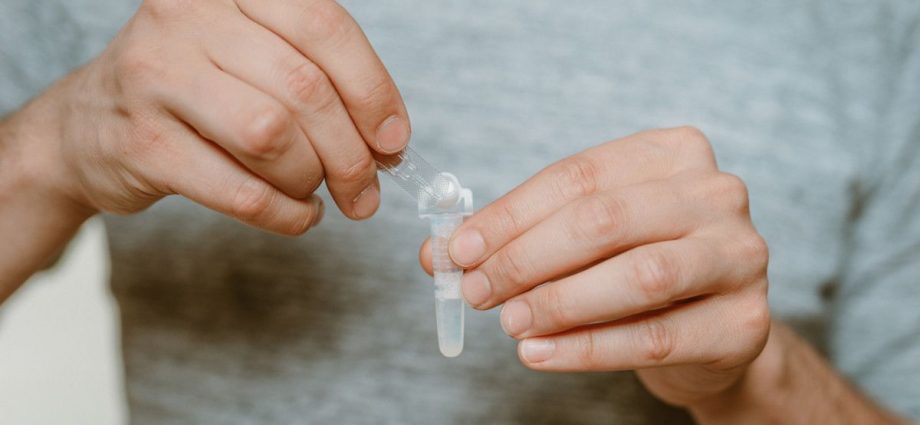Currently, the “gold standard” in testing for the presence of coronavirus is the RT-PCR test. Its disadvantage, however, is the waiting time for the result – usually from a few to several hours. Rapid antigen tests are an alternative, but they are less sensitive. The breakthrough may be saliva testing, which uses your own cell phone.
- The new test was developed by researchers at Pennsylvania State University
- It is based on a method called isothermal amplification
- Its specificity and sensitivity correspond to RT-PCR tests, but the test itself is cheaper, easier to use and faster – from execution to obtaining the result is only 45 minutes.
- The person who performs the new test only has to spit into the vial, insert it into the device from the kit and check the result on their smartphone
- More information can be found on the Onet homepage
Just spit a small device in 45 minutes to determine whether we are infected with COVID-19 and transmit the result to a smartphone – informs the magazine “ACS Sensors”.
Current SARS-CoV-2 tests have their drawbacks
The two main types of COVID-19 tests in use today are rapid antigen tests and tests based on the classic real-time polymerase chain reaction (RT-PCR).
Rapid antigen tests (available, for example, in pharmacies) they deliver the result directly to the user in about 15 minutes, but are not very sensitive and may produce a false-negative result whereby someone may unknowingly infect others.
Although RT-PCR test is considered the “gold standard” due to its high sensitivity and specificity to the SARS-CoV-2 virus, it requires a sample to be sent to a laboratory and analyzed by specialized personnel. The analysis itself can take up to an hour, but the total time from the swab to the response – even several days. In addition, both methods require the cumbersome process of taking a nasal swab.
Now, researchers at Pennsylvania State University have developed a new test to detect the SARS-CoV-2 virus in a saliva sample and a prototype device that they claim combines speed and ease of performance with high sensitivity.
COVID-19: New Saliva Test
Non-invasive saliva-based tests already exist, but they use a slow RT-PCR process that requires specialized equipment. A similar method called isothermal amplification (RT-LAMP) has a specificity and sensitivity corresponding to RT-PCR, but is faster, cheaper and easier to use.
The rest of the text below the video.
Therefore, Weihua Guan and his colleagues at Pennsylvania State University wanted to see if they could use RT-LAMP to create a quick and sensitive test for COVID-19 that only requires a saliva sample, a portable hand-sized device and a smartphone.
Scientists integrated several steps into one compact machine, which they called the SARS-CoV-2 saliva-based self-test with RT-LAMP in a mobile device (SLIDE). Five separate modules carry out all the steps needed for RT-LAMP: heating the sample, mixing it with RT-LAMP reagents, performing the reaction, detecting the amount of viral RNA and transferring the results to a smartphone.
To use SLIDE, The test person simply spits into a vial which he puts in the device and the results are sent to the smartphone within 45 minutes.
In laboratory tests, SLIDE successfully detected and quantified a sample of saliva containing inactivated SARS-CoV-2 virus particles, as well as a sample of real saliva from someone known to be COVID-19 positive. In both cases, the results were consistent with the RT-PCR results, suggesting the SLIDE device could be a quick, easy and sensitive way to tell if someone has COVID-19. (PAP)
At medonetmarket.pl you will find home tests for SARS-CoV-2:
- COVID-19 Rapid Test – Antigenic Test for Self-Control
- COVID-19 antigen test – SGTi-flex COVID-19 Ag
- Home COVID-19 Ag SGTi-flex cartridge test
- COVID-19 – Rapid Saliva Antigen Test
Author: Paweł Wernicki
pmw/ year/
We encourage you to listen to the latest episode of the RESET podcast. This time Joanna Kozłowska, author of the book High Sensitivity. A Guide for Those Who Feel Too Much »says that high sensitivity is not a disease or dysfunction – it’s just a set of characteristics that affect the way you perceive and perceive the world. What are the genetics of WWO? What are the perks of being highly sensitive? How to act with your high sensitivity? You will find out by listening to the latest episode of our podcast.
We encourage you to listen to the latest episode of the RESET podcast. This time Joanna










